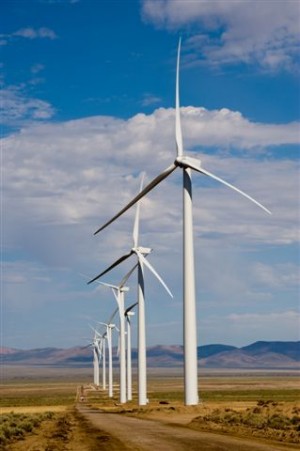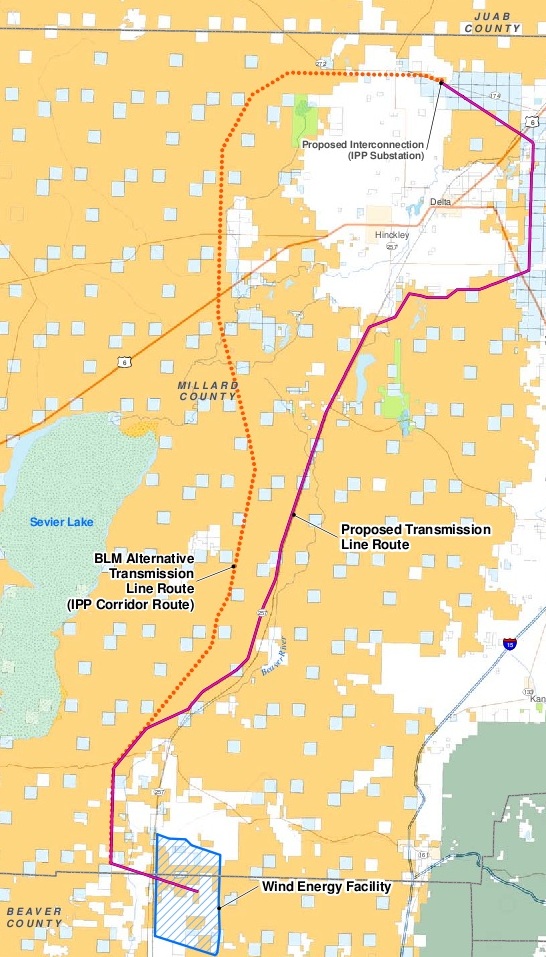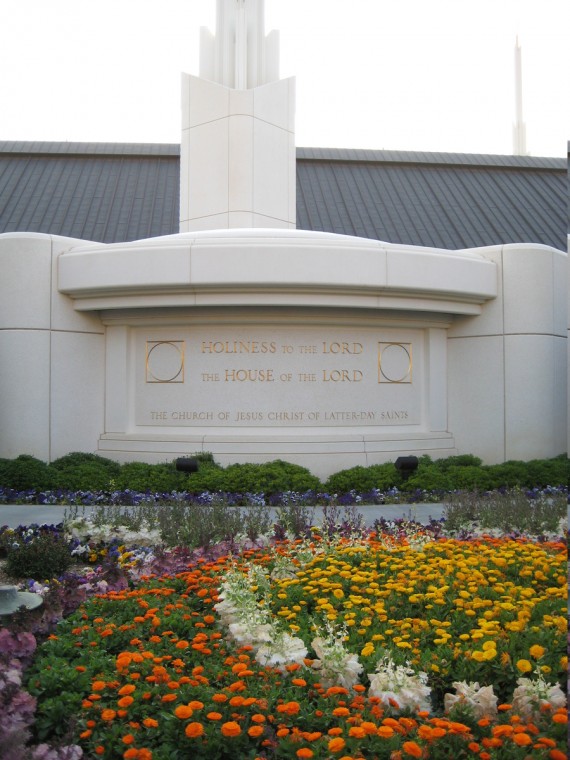An update to the original November 2009 article.
An event happening last year near Milford, Utah caught my attention. The first phase of the Milford Wind Corridor Project was completed and is the largest wind facility in Utah and one of the largest in the West. Here is what the official press release had to say:
Located in Millard and Beaver County, Utah, the first phase of the project will generate 203.5 MW of clean energy, making it the largest renewable energy facility in Utah. At a ribbon-cutting event at the project site near the town of Milford, First Wind officials were joined by Utah Lt. Governor Greg Bell, officials with the federal Bureau of Land Management (BLM), state and local officials, as well as officials with the Los Angeles Department of Water and Power (LADWP), the cities of Burbank and Pasadena, and the Southern California Public Power Authority (SCPPA).
The Milford Wind Corridor is the first wind energy facility permitted under the Bureau of Land Management’s Wind Energy Programmatic Environmental Impact Statement (EIS) for Western US states. But why wind power when Utah has plenty of cheap coal? This electricity is bound for California to help achieve the Los Angeles goal of 20 percent renewables by 2010.
Updates
Since the original story in November of last year there have been a few events concerning the Milford Wind Project.
February 11, 2010 — Kelsey Mitchell, a senior at Millard High School, will be the first recipient of a one-time scholarship of $3,000 through the First Wind Scholars program. In March the program was expanded to include as many as 10 scholarships for qualified students. In addition, one renewable scholarship of $5,000 for up to four years will be awarded to the most qualified student.
February 24, 2010 — First Wind was recognized during the Excellence in Renewable Energy award in Austin, Texas. The Milford Wind project received the “Reader’s Choice Award” by the readers of RenewableEnergyWorld.com, a widely read renewable energy news source.
April 27, 2010 — After a morning visit with Governor Gary Herbert in Salt Lake City, Interior secretary Kenneth Salazar visited Milford High School to congratulate the renewable energy class of Andy Swapp, whose students were instrumental in gathering information used in creation of the 204 megawatt wind farm.
May 9, 2011 — First Wind announced Monday that the construction of the 102-megawatt Milford Wind Corridor Phase II — Milford II — project has been completed and commercial operations have begun.
Why Wind Power?
Here are some of the advantages and disadvantages of generating electricity by wind. Perhaps you can think of some I have missed.
Advantages
- Wind turbines do not generate pollution or radioactive waste.
- Their construction and installation has less environmental impact.
- Individual homes can be supplied independent of power lines, ensuring electricity during natural disasters.
- Using larger turbines connected to the grid, power can be generated for large numbers of people.
- No non-renewable resources, like coal, natural gas, or oil are consumed.
- Wind is a domestic source of power.
- No water required (compared with 490 gallons per megawatt-hour for coal).
Disadvantages
- The cost of electricity is more than coal, natural gas, or nuclear.
- Subsidies are required.
- An undesirable appearance.
- Because of their height, they can be damaged by lightning.
- The blades of wind turbines can hit birds.
- Some turbines produce noise.
Technical Details
The Milford Wind Project consists of:
- Generation of 203.5 megawatts.
- 97 wind turbine generators.
- A 90-mile transmission line connecting the wind farm to the IPA in Delta, Utah.
- 13 meteorological towers.
- A 34.5K volt power underground collection system linking each turbine to the next and to the Facility substation.
- A Facility collector substation.
- An interconnection facility at the connection between the Facility transmission line and the IPP substation.
- A Supervisory Control And Data Acquisition (SCADA) system.
From the press release:
Featuring 97 total wind turbines including 58 Clipper Liberty 2.5 MW wind turbines and 39 GE 1.5 MW wind turbines, the first phase of the project has the capacity to generate clean, wind energy to power about 45,000 homes per year. Managed by the dedicated team at RMT, Inc., construction on the 203 MW first phase of the Milford Wind Corridor project began nearly a year ago in November 2008.
Economic Benefits
The town of Milford and Beaver and Millard counties can harness this energy source to help the local economy.
- Providing employment through construction jobs and long-term operations and maintenance positions.
- Leasing land from area residents.
- During construction and operation, increased use of local goods and services.
- Reduced dependence on costly imported fossil fuels.
- Tax revenues received from wind farms.
One of the substantial costs of wind power is building the transmission lines. In the map below the eventual route chosen was the IPP Corridor Route to the west across BLM land.





 Checks your blog for broken links and missing images and notifies you by email or on the dashboard if any are found.
Checks your blog for broken links and missing images and notifies you by email or on the dashboard if any are found. Provides a checkbox on the editing page which you can check to exclude pages from the primary navigation.
Provides a checkbox on the editing page which you can check to exclude pages from the primary navigation. WP-DB-Backup allows you easily to backup your core WordPress database tables. You may also backup other tables in the same database. Backups can be delivered by email.
WP-DB-Backup allows you easily to backup your core WordPress database tables. You may also backup other tables in the same database. Backups can be delivered by email.






























